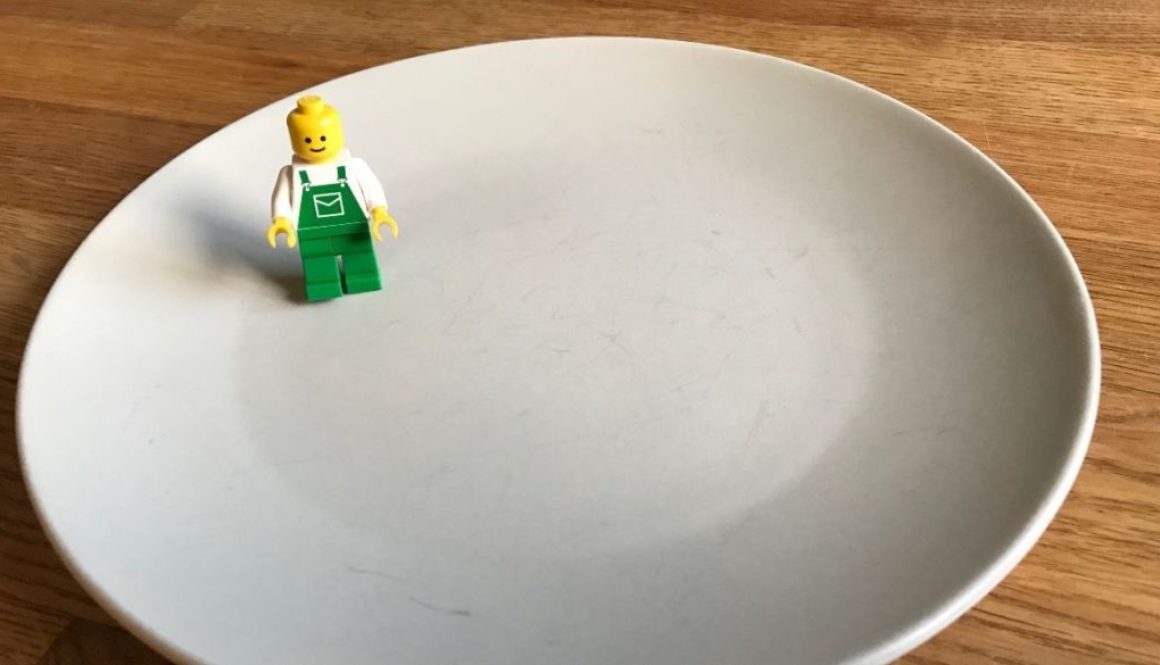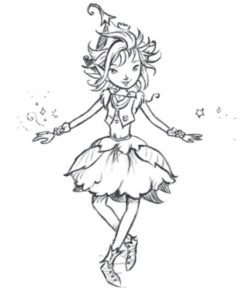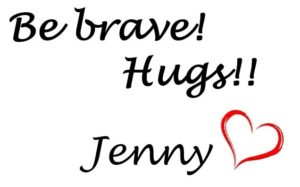Help children grow their courage and manage their fears

It’s warm and humid. I’m sitting poolside watching as my seven year old daughter is learning to dive. She’s a bit cold and not very impressed with waiting in line for her turn to go in the water. It’s the third Wednesday and at this session it’s time for the 3 meter diving board. The first dive goes ok but during the second she hits the surface and the impact hurt her arms and hands. She bravely goes back to try again but can’t get her body to jump.
Her teacher tries talking to her to support her but she’s frozen. Still she’s stubbornly standing there, refusing to come back down the ladder. Even as the class ends and the other children walks off to the showers she stands there with a determined look on her face.
I walk over to her. “Hey honey, how’s it going?” I ask her. “I can’t do it mom, my body is too scared! But I want to!” she exclaims, tears filling in her eyes. At this point I don’t know if I should praise her for her drive or make a logical case making it okay not to push herself this time.
You get better at what you do repeatedly – practice courage
It’s been a returning subject at our house. The idea that courage is a good thing, that you can’t feel courageous unless you’re scared and that you can grow braver with practice. My daughters know that battling fear makes them braver and that a win is always a win for the bigger picture. Even if a particular fear might seem small and relatively insignificant it will still count towards courage when you overcome it.
I’ve used this concept to push my own limits. I’ve challenged my comfort zone with the conscious intent to prove to myself that I can become braver. My girls heard me talking about this “comfort zone”-thing and they wanted to know what it meant. I wanted to explain it so that a child could relate.
Walking around on a dinner plate
We were sitting at the kitchen table, we’d just finished our meal, and I pushed my now empty dinner plate towards the middle of the table. I went into the playroom and brought back a Lego man. I tried to win their attention and when they saw the toy they got curious. I said, “Imagine that you are a reeeeally small person and that you are standing in the middle of this plate.”
I sat the Lego man down in the middle of my dinner plate.
“Picture this plate as a map and everywhere on it are the places that you already know and that you feel comfortable visiting.”
To get them even more involved I asked them; “What are some places that you’ve visited, that you know and where you feel safe?” We discussed and came up with school, our home, grandma and granddad’s place, the store, the nearest playground and so on.
I continued: “Now imagine that you walk around and all of a sudden you come really close to the edge of the plate. You realize that on the other side is someplace you’ve never been before. It’s always a little scary to actually walk off the plate. You never know what you’re going to find.”
We talked back and forth about questions like; “Do you have to walk of the edge? What if you decide to stay on the plate all your life – what will that life look like? What are some things or places that you could find outside of the plate?”
I explained that once they’d been to a new place the plate would grow and the space where you feel safe is now even bigger. Your comfort zone has expanded.
Personalize your fear voice
Apart from laying some groundwork, with the story of pushing your comfort zone, another way to help children battle limiting fears is to learn about what fear is for. When you learn about fear and make it into something not to despise but something that can even be loved you rob it of its freezing tendency.
In a relatively short period, around her sixth birthday, my daughter had a number of random events happening that pushed her towards anxiousness. I wanted to find a way to support her and for her to find a way to manage the fear on her own. We invented Madeleine.

Madeleine is a little fairy living on my daughter’s shoulder. Every time my daughter is faced with a new situation or person the little fairy gets really anxious. Out of love and a will to protect my daughter Madeleine works hard to keep her safe at all costs. Madeleine will always try to hinder change. My daughter named the fairy and gave her the tone of voice as well as the appearance. Madeleine looks suspiciously identical to the fairy named Trixy in the Secret kingdom books.
My daughter learned to love her fairy and she felt like she had a companion that could understand. She felt like she had to comfort and protect Madeleine and prove to her that things aren’t that dangerous. All of a sudden my daughter was explaining to the imaginary fairy why they had to try these new things.
What can you do to support a child that is limited by fear?
- Set the stage for appreciating fear – Talk about challenging your comfort zone so the “concept” is there. Learn to look for challenges to conquer.
- Tell the story of the fear voice and help your child personalize her own version
- In the moment try to help her define what the wished for result should be for this particular situation. What would be a challenging but still okay result to set as the goal? Maybe you need to help to divide the situation up in small manageable steps.
My seven year old on the 3 meter diving board was having none of my reasoning towards passing on this particular challenge. She refused to come down. But still she stood there frozen and unable to take the plunge. I waited and waited… and waited. I was ready to support her 100% had she decided to climb down, I would have signed up for returning to the pool any time she wanted to try again. But finally I heard her tell her body that she’d had enough. “We’re going to do this even if you’re scared. I decide!” and she jumped. When she broke back up through the surface her entire face was beaming.
Make sure the “win” is hers so she can recreate it on her own.
In the car on the way home she was still giddy with excitement. “Thank you, thank you, thank you! I could never have done it without you! Thank you for coming with me!” she poured over me.
I responded; “Honey it was all you! I’m so proud of how you wouldn’t give up and how you took control over your fear. What an extraordinary determined thing you did. Now you know that your body can’t control you. I’m glad I was there to see you challenge yourself, what an inspiration it was to see you take on that fight. And even if you hadn’t jumped this time I know you would have come back another day to continue the fight.”
It feels great receiving gratitude and appreciation but I felt how important it was to make the win all her own. I believe that I need to be careful about what I connect my pride and self esteem to. I could easily fall into feeling proud of myself for supporting my daughter into conquering her fear of diving. It’s deviously intoxicating receiving all that connection and appreciation from her.
The “win” has many levels and all of them are gorgeous. But since my belief is that it’s my job to make my children independent and self-reliant those goals are paramount. I try to adopt the belief that the greatest job I just did was in giving her a conscious win. I helped orchestrate a situation where she proved to herself that she can overcome her fear by herself.
